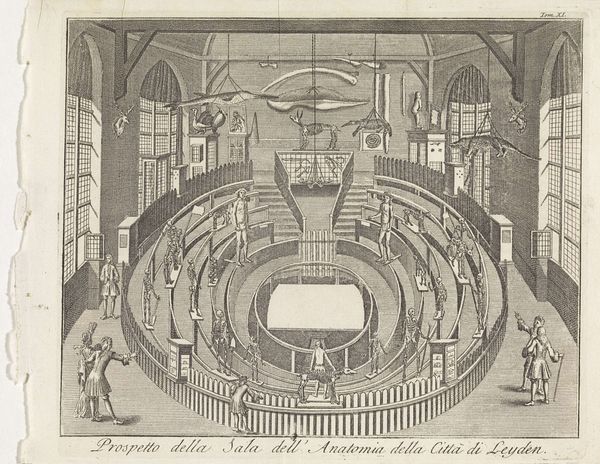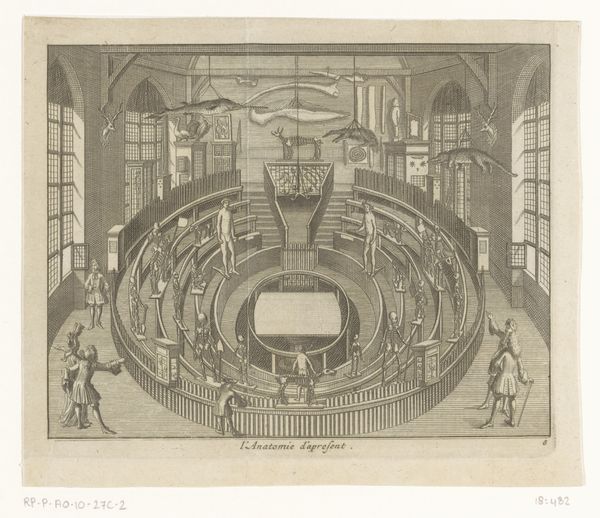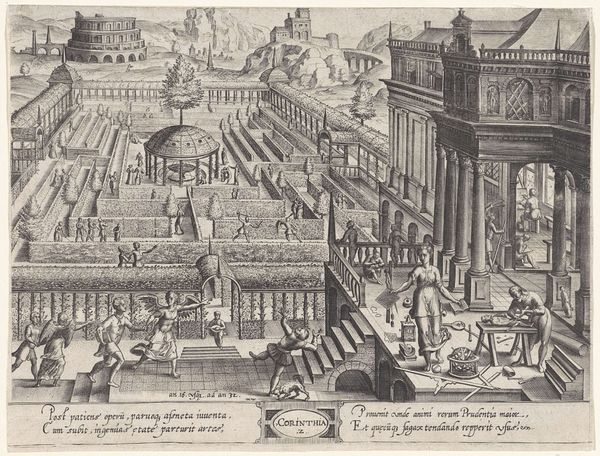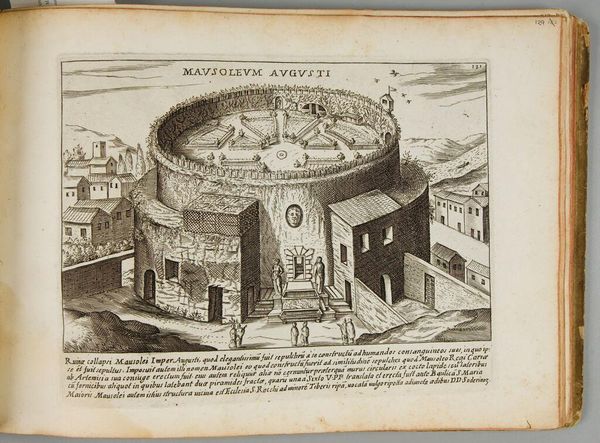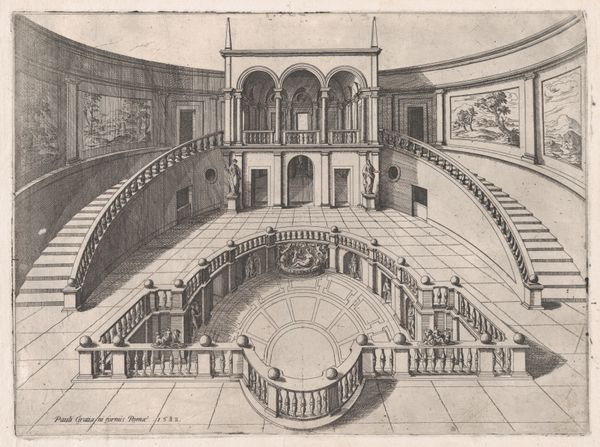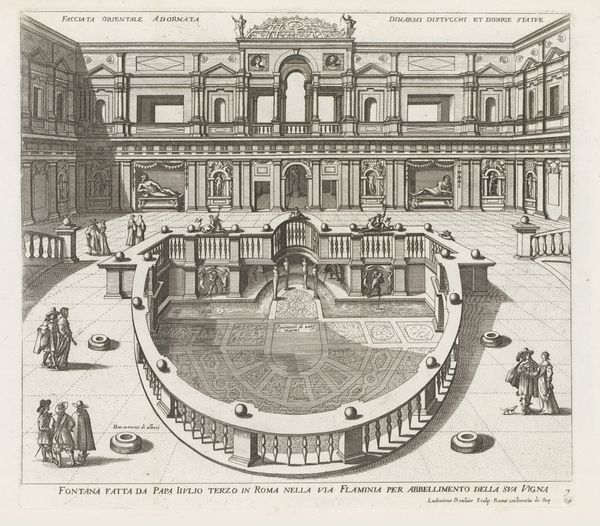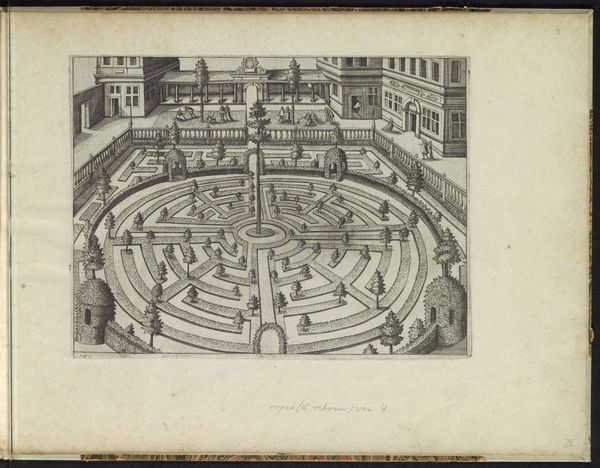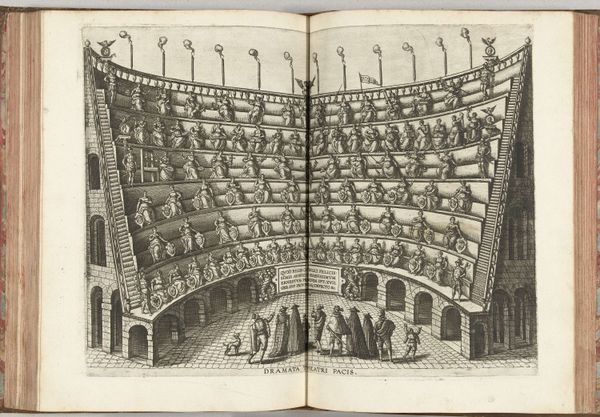
print, engraving
# print
#
perspective
#
figuration
#
11_renaissance
#
line
#
genre-painting
#
history-painting
#
academic-art
#
engraving
Dimensions: height 330 mm, width 396 mm
Copyright: Rijks Museum: Open Domain
Curator: This engraving presents the anatomical theatre of Leiden University. Produced between 1610 and 1644, the print captures not just the space itself but the spectacle of early modern anatomy. Editor: It’s a fascinating composition, quite theatrical. The way the tiers of onlookers circle the central table creates a sense of depth and almost dizzying perspective. All that linearity gives the impression of… rational investigation, I suppose. Curator: Indeed. Anatomical theatres were crucial sites for the advancement of medical knowledge but were also imbued with social and political meanings. The theatre served as a public demonstration of power, both intellectual and civic. Notice how skeletons and animal remains adorn the space? Editor: They’re incredibly lively! These macabre details seem almost playful amid the grim business that’s suggested, don't they? They create rhythm and a very unique spatial dimension that defies our usual assumptions about scientific inquiry. Look at that light streaming from the upper window – it catches those skeletal forms just so, doesn't it? Curator: The display of skeletons served as a "memento mori", reminding viewers of mortality but also reinforcing the social order through scientific authority. The theatre normalized the dissection of human bodies. Anatomy thus helped solidify an intellectual hierarchy and demonstrate the power of empirical knowledge in that particular period. Editor: But even within the regimentation, that strong perspectival pull of the image and line of sight does bring it all to life. I am struck at how art manages to elicit that blend of wonder, rational ordering and human vulnerability so well! Curator: Swanenburg’s rendering is an impressive example of how knowledge, art, and authority converged in the early 17th century, framing an emergent empirical epistemology in Northern Europe. Editor: Indeed, reflecting on it, the interplay of formal arrangement with macabre details is quite brilliant, really!
Comments
No comments
Be the first to comment and join the conversation on the ultimate creative platform.
